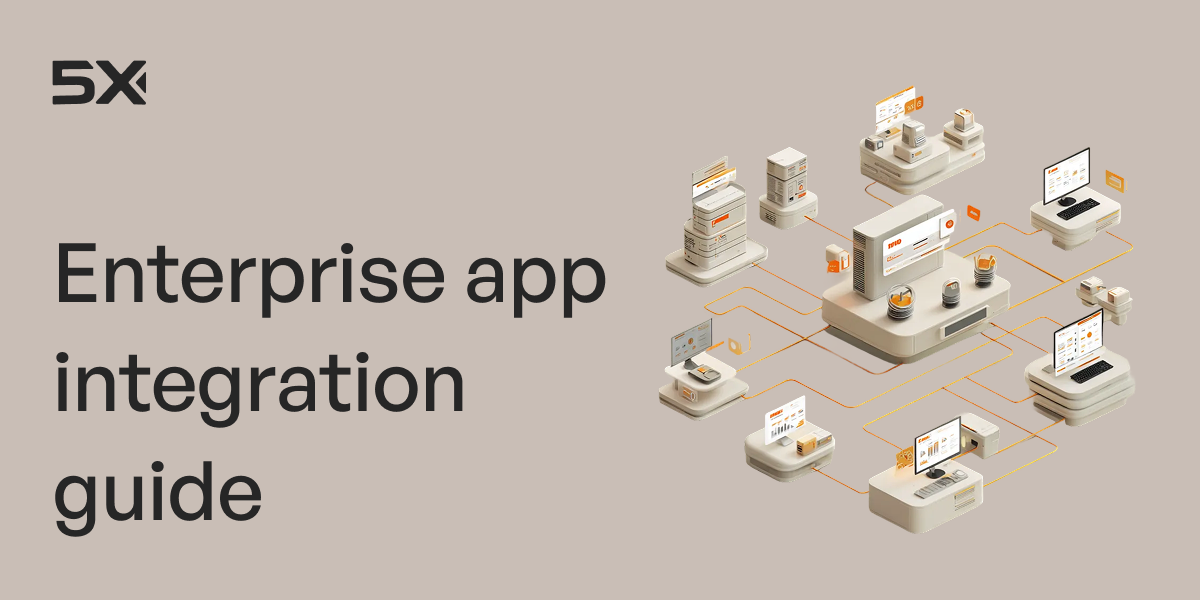Top 10 Stitch Alternatives in 2025 [Full-stack, ETL, ELT]


Table of Contents
TL; DR
Stitch Data is often touted as a go-to ETL solution, but relying solely on it can lead to major headaches for data teams.
While it may handle basic ETL tasks well, its limitations become apparent when dealing with more complex data needs. From inadequate transformation capabilities to pricing issues that scale with data volume, Stitch can struggle under large-scale operations.
Plus, its limited support for real-time streaming, lack of advanced connector customization, and no support for on-premise sources make it less ideal for demanding data environments.We'll address these shortcomings as we explore Stitchdata alternatives and suggest options that better align with complex data needs.Before that, let's review Stitch Data, its features, and drawbacks.
Before that, let’s review Stitch Data, its features, and drawbacks.
What is Stitch Data?
Stitch Data is an ETL (extract, transform, load) service focused on simple data integration. It enables data teams to move data from a variety of sources (like databases, SaaS tools, and applications) into data warehouses like Snowflake, BigQuery, or Redshift. Designed for ease of use, it offers a no-code interface and supports a range of data sources through 100+ pre-built connectors.
Key features of Stitch Data
- Pre-built connectors: Over 130 native connectors for popular data sources like MongoDB, Salesforce, and Zendesk, making Stitch data integrations straightforward for common business applications.
- Incremental replication: Utilizes change data capture (CDC) for efficient, incremental updates.
- Data extraction and loading: Simplifies data extraction with a straightforward UI and automates loading to multiple destinations.
- Scheduling and automation: Allows flexible scheduling for data syncs, enabling regular batch data transfers.
- REST API support: Enables custom stitch data integrations by allowing users to build connectors for uncommon data sources.
- Integration with Singer: Compatibility with the Singer open-source data pipeline framework for building custom integrations.
What are the drawbacks of using Stitch Data?
- Limited transformations: Primarily focuses on EL (extract and load) and lacks robust transformation capabilities.
- Pricing and scalability: StitchData pricing scales with the volume of data rows, which can get costly as your data grows.
- Data latency issues: Although Stitch supports incremental replication, latency may occur with certain connectors or during peak loads.
- Limited connector customization: Custom connectors require technical expertise and significant development effort.
- No support for on-premise sources: Limited to cloud-based data sources, lacking direct support for on-premises databases.
Top 10 Stitch Alternatives in 2025
When evaluating Stitchdata competitors, it's important to consider both commercial and Stitch alternatives open source options that might better suit your specific data needs:
- 5X: Best for full-stack data platform with extensive connectors
- Airbyte: Best for flexible, open-source integrations
- Matillion: Best for cloud-native ETL/ELT
- dbt: Best for SQL-based transformations and version control
- Portable: Best for custom integrations with real-time sync
- Hevo Data: Best for real-time integration with automated schema mapping
- Azure Data Factory: Best for complex data orchestration with Azure
- Apache NiFi: Best for real-time, scalable data processing
- Singer: Best for customizable, open-source data connectors
- Talend: Best for comprehensive, large-scale ETL workflows
1. 5X
The debate between choosing Stitch Data or an all-in-one platform like 5X often comes down to your team's priorities. Stitch offers a straightforward solution for data integration with a wide range of connectors but lacks comprehensive support for transformation, orchestration, and business intelligence.
Beyond just integration
Stitch Data excels in data extraction and loading capabilities but doesn’t address transformation, orchestration, or BI needs comprehensively. This can result in fragmented workflows and higher total cost of ownership (TCO) due to the need for additional tools and custom coding.
With 5X, you get a full-stack data platform that handles not just integration but everything from ingestion to BI. Here’s why 5X is a better choice:
- Integration: While Stitch offers a broad range of connectors, 5X includes over 500 pre-built connectors and simplifies the development of custom connectors for niche sources, providing seamless integration without the complexities of coding.
- Transformation: Stitch Data lacks native transformation capabilities and often relies on external tools or manual scripting. 5X provides a comprehensive suite of transformation tools, including support for SQL, Python, and notebooks, with advanced features such as lineage tracking and version control.
- Orchestration and automation: Stitch users typically need external orchestrators like Apache Airflow for workflow management. 5X includes built-in enterprise-grade orchestration with 1-click scheduling, streamlining pipeline management and reducing the need for additional tools.
- Business Intelligence: While Stitch integrates with BI tools, it does not offer built-in BI options. 5X provides Superset as an in-built BI tool and integrates deeply with major BI platforms, enabling faster insights with less setup.
- End-to-end data management: Stitch requires separate tools for data warehousing, modeling, and BI. In contrast, 5X integrates these functions into a unified platform, minimizing the need for multiple tools and reducing the associated friction.
Stitch Data: The trade-offs of a focused integration approach
- Lack of built-in transformations: You’ll need additional tools or manual coding to handle data transformations, adding complexity and maintenance.
- Fragmented workflows: Using multiple tools can lead to disjointed data workflows, increasing potential points of failure and coordination efforts.
- Limited orchestration: The lack of native orchestration in Stitch Data means additional tooling and overhead for managing data pipelines.
Feature comparison of 5X and Stitch Data
The bottom line: Is Stitch's integration focus worth it?
Stitch Data focuses on integration but lacks enterprise-grade built-in transformation and orchestration. It’s decent enough for straightforward ETL tasks but requires additional tools for a complete data pipeline.
For teams looking for a comprehensive data solution, 5X is a better choice. It provides integration, advanced transformation, and full data management capabilities in a unified platform—reducing costs and improving efficiency. While Airbyte’s integration capabilities may be appealing, 5X offers a more complete, future-proof solution for data readiness.
2. Airbyte
Airbyte is an open-source data integration platform that allows you to build data pipelines from a wide range of sources to your preferred destinations. As one of the most popular Stitch alternatives open source options, it focuses on flexibility, customization, and community-driven development, offering both cloud and self-hosted deployment options.
Key features
- Over 300 pre-built connectors, with new ones added frequently by the community.
- Custom connector development using its open-source framework, allowing full customization.
- Incremental data replication to efficiently handle changes and minimize load.
- Supports both EL (Extract and Load) workflows and basic transformations through dbt (Data Build Tool).
- Deployment flexibility, including cloud, on-premise, and hybrid environments.
- Data observability features, such as metadata tracking, lineage, and monitoring.
- Secure handling of credentials and PII with granular access controls.
Pros
- High flexibility due to open-source nature, allowing for custom connectors and modifications
- Strong community support with frequent updates and new connector additions
- Supports hybrid and on-premise deployments, catering to more diverse infrastructure needs
- Cost-effective for teams that want to avoid vendor lock-in and prefer self-hosted solutions
- Incremental replication minimizes data transfer costs and optimizes sync processes
- Native support for dbt for in-warehouse transformations
Cons
- Requires significant engineering effort to set up, maintain, and develop custom connectors.
- Limited UI capabilities compared to other ETL tools; relies heavily on manual configurations.
- Lacks advanced built-in transformation features; relies on dbt or other external tools.
- Performance can vary significantly depending on how it's configured and maintained.
- Potentially slower support response times, depending on community contributions and open-source nature.
- Can become complex to manage at scale without strong internal expertise.
Why Airbyte is a good Stitch alternative
Airbyte is a solid Stitchdata alternative for teams that need flexibility, the ability to customize, and are looking for a cost-effective, open-source option. Its support for a wide range of connectors and deployment environments makes it particularly suitable for complex or unique data integration scenarios.
G2 rating: 4.5/5
3. Matillion
Matillion is a cloud-native ETL/ELT platform designed for data transformation directly within cloud data warehouses like Snowflake, BigQuery, Redshift, and Synapse. Unlike traditional ETL tools, Matillion focuses heavily on leveraging the power of cloud-based data warehouses to perform complex data transformations using their processing capabilities, rather than relying on external compute resources. It provides a graphical interface for building data workflows, SQL-based transformations, and orchestration of data pipelines.
Key features
- In-warehouse transformations that utilize the compute power of cloud warehouses.
- Native integration with Snowflake, Redshift, and BigQuery, including full support for their specific features.
- Workflow orchestration with dependencies, error handling, and scheduling.
- Custom scripting capabilities using Python, SQL, and Bash for advanced transformations.
- Over 100 pre-built connectors and the ability to create custom connectors via REST API.
- Change Data Capture (CDC) support for databases like Oracle and MySQL.
- Version control and collaboration through Git integration.
Pros
- Simplifies ETL development with a user-friendly visual interface
- Optimized for cloud data warehouses, ensuring high performance
- Enables orchestration of multi-step data workflows
- Extensive library of built-in connectors reduces the need for custom coding
- Scales with large datasets in cloud environments
- Offers low code / No code functionality
Cons
- Limited to cloud environments, with less support for on-premise systems
- Pricing can become steep for large-scale operations
- Git integration and version control issues
- Logging and monitoring limitations
Why Matillion is a good Stitch alternative
Matillion’s deeper transformation capabilities, orchestration options, and integration with cloud platforms make it a strong alternative to Stitch Data, especially for teams needing robust ETL/ELT functionality.
G2 rating: 4.4/5
4. dbt
dbt (Data Build Tool) is a command-line tool that focuses on transforming data directly within the data warehouse using SQL. It specializes in building and managing data models and workflows for analytics.
Key features
- SQL-based transformation of data within the warehouse.
- Version control integration for managing changes and collaboration.
- Automated testing of data models to ensure data integrity.
- Support for incremental models and materializations to optimize performance.
- Documentation and lineage tracking for data models and transformations.
Pros
- Allows complex transformations directly within the data warehouse, leveraging its computational power.
- Integration with version control systems facilitates collaboration and change management.
- Automated testing and documentation enhance data quality and transparency.
- Incremental models improve performance by processing only changed data.
Cons
- Requires knowledge of SQL for writing transformations and managing models.
- Not a full ETL tool; focuses primarily on data transformation rather than extraction or loading.
- Limited real-time data processing capabilities; suited more for batch processing
Why dbt is a good Stitch alternative
dbt is a good alternative to Stitch because it focuses on advanced data transformations directly within the warehouse, which Stitch lacks. It integrates with version control for better collaboration and automated testing to ensure data quality. Unlike Stitch, dbt provides detailed documentation and lineage tracking for data models.
G2 rating: 4.8/5
5. Portable
Portable.io is a data integration platform specializing in providing connectors for long-tail and niche data sources. It focuses on custom-built integrations tailored to unique or less common data sources that are often not supported by mainstream ETL tools.
Key features
- Extensive library of over 300 pre-built connectors, including highly specialized or rare data sources.
- Custom connector development service, enabling bespoke integrations for specific business needs.
- Real-time data synchronization for low-latency data transfer between sources and destinations.
- Cloud-native deployment with managed infrastructure, reducing the need for in-house maintenance.
- Comprehensive data security features, including end-to-end encryption and compliance with major data privacy standards.
- Data observability tools for monitoring and auditing data flows, providing transparency and troubleshooting capabilities.
Pros
- Unique focus on supporting rare and less common data sources not covered by most ETL tools.
- Provides dedicated support for developing custom connectors tailored to specific data requirements.
- Real-time synchronization capabilities make it suitable for low-latency data use cases.
- Fully managed infrastructure reduces operational overhead and simplifies data pipeline management.
- Strong data security measures and compliance with privacy regulations.
Cons
- Limited support for on-premise deployment; primarily designed for cloud environments.
- Can be costly for teams requiring multiple custom-built connectors or significant volumes of data.
- Less established community and ecosystem compared to other open-source or more widely used ETL tools.
- Dependent on vendor for custom connector development, potentially leading to longer lead times for new integrations.
- Lacks advanced data transformation features, requiring external tools for complex transformations.
Why Portable is a good Stitch alternative
Portable.io is a great alternative to Stitch Data for organizations that deal with unique or niche data sources not well-supported by mainstream ETL platforms. Its focus on custom connectors and real-time data synchronization offers a tailored approach for specialized data integration needs.
G2 rating: 4.3/5
6. Hevo Data
Hevo Data is a cloud-based ETL platform designed for real-time data integration and transformation. It focuses on automating data pipelines with a strong emphasis on ease of use and quick setup.
Key features
- Supports over 150 pre-built connectors for various data sources and destinations.
- Real-time data replication with minimal latency, allowing for near-instantaneous updates.
- Automated schema mapping and data type conversion to simplify data integration.
- Built-in data transformation capabilities for basic ETL processes, with support for custom transformations.
- Intuitive drag-and-drop interface for pipeline design and management.
- Data monitoring and alerting features for pipeline health and data quality.
- End-to-end data encryption and compliance with major data privacy standards.
Pros
- Extensive library of pre-built connectors supports a wide range of data sources and destinations.
- Real-time data replication ensures up-to-date information with low latency.
- User-friendly interface simplifies setup and management of data pipelines.
- Automated schema mapping reduces manual configuration and errors.
- Robust monitoring and alerting help maintain data pipeline performance and quality.
Cons
- Limited support for highly complex data transformations; may require additional tools for advanced use cases.
- Higher costs for large-scale deployments or extensive use of premium connectors.
- Less flexibility for custom connector development compared to open-source alternatives.
- May have performance limitations in very high-throughput scenarios or complex data environments.
Why Hevo is a good Stitch alternative
Hevo Data is a good alternative to Stitch because it offers real-time data replication, simplifying real-time data updates. Its user-friendly drag-and-drop interface and automated schema mapping reduce manual setup and errors. Additionally, Hevo's built-in transformation capabilities handle basic ETL tasks directly, minimizing the need for extra tools.
G2 rating: 4.3/5
7. Azure Data Factory
Azure Data Factory is a cloud-based data integration service from Microsoft that allows for data movement, transformation, and orchestration across various data sources and destinations.
Key features
- Supports over 90 built-in connectors for diverse data sources and destinations.
- Provides a visual interface for designing data workflows and pipelines.
- Offers data transformation capabilities with built-in data flow activities and integration with Azure Databricks.
- Provides scheduling and orchestration features for managing complex ETL processes.
- Enables monitoring and management of data pipelines with detailed logs and alerts.
Pros
- Extensive range of connectors supports diverse data environments.
- User-friendly visual design interface simplifies pipeline creation.
- Integration with Azure services and Databricks enhances transformation and processing capabilities.
- Scalable and flexible orchestration for managing complex data workflows.
Cons
- Can be complex to configure and manage for users unfamiliar with Azure services.
- Performance may vary depending on pipeline complexity and data volume.
- Limited out-of-the-box support for real-time data processing; more suited for batch ETL jobs.
Why Azure Data Factory is a good Stitch alternative
Azure Data Factory is a strong alternative to Stitch due to its extensive connector library, advanced data transformation features, and robust orchestration capabilities. Unlike Stitch, which is more focused on data extraction and loading, Azure Data Factory offers comprehensive tools for both transformation and workflow management.
G2 rating: 4.6/5
8. Apache NiFi
Apache NiFi is an open-source data integration tool designed for automating the movement and transformation of data between systems. It provides a highly configurable and scalable platform for data flow management, supporting a wide range of use cases from simple data ingestion to complex workflows.
Key features
- Drag-and-drop interface for designing data flows with complex routing and transformation.
- Real-time data processing with low latency and high throughput.
- Built-in processors support a wide range of data sources and destinations; custom processors can be created.
- Comprehensive data provenance tracking, monitoring the lifecycle of data through each stage.
- Advanced error handling, flow prioritization, and management.
- Deployable on-premise or in cloud environments, with flexible scaling options.
- Security features include encryption, access control, and secure communication.
Pros
- Highly customizable with a user-friendly interface for designing complex data flows.
- Real-time processing supports high-throughput and low-latency use cases.
- Detailed data provenance enables robust tracking and auditing of data movements.
- Flexible deployment options and strong error handling ensure reliability and scalability.
- Extensive configuration options for security and flow management.
Cons
- Complex setup and configuration may be challenging for users unfamiliar with its features.
- Performance can suffer from misconfiguration or inadequate resources in high-load scenarios.
- The learning curve is steeper compared to simpler ETL tools due to its wide range of features.
- Limited out-of-the-box support for some niche data sources; custom development may be needed.
Why Apache NiFi is a good Stitch alternative
Apache NiFi offers powerful capabilities for managing complex data flows with real-time processing and comprehensive data tracking, making it a strong alternative to Stitch Data for scenarios that demand high flexibility and detailed flow management.
G2 rating: 4.2/5
9. Singer
Singer is an open-source framework for data integration that uses a standardized format for data extraction and loading, known as "taps" for data sources and "targets" for destinations.For those seeking Stitch alternatives open source options, Singer offers a flexible foundation for building custom data pipelines.
Key features
- Provides a framework for building and running connectors (taps) to extract data from various sources.
- Uses a standardized JSON-based format for data extraction and loading, simplifying integration.
- Supports custom tap and target development for specific use cases.
- Community-driven with a wide range of existing taps and targets available.
Pros
- Standardized format facilitates consistent data extraction and loading across different sources and destinations.
- Open-source and community-driven, with a growing number of connectors.
- Flexibility to create custom taps and targets for specialized needs.
- Lightweight and modular, allowing integration with various data pipelines and workflows.
Cons
- Requires technical expertise to develop and maintain custom taps and targets.
- Limited out-of-the-box features for data transformation and complex workflows.
- Less user-friendly compared to managed ETL tools; more suited for technical teams with specific needs.
Why Singer is a good Stitch alternative
Singer is a strong alternative to Stitch due to its standardized format for data integration and flexibility in creating custom connectors. Unlike Stitch, which provides managed ETL solutions, Singer offers a modular, open-source approach that can be tailored to specific needs and integrated into various data workflows.
G2 rating: N/A
10. Talend
Talend is a comprehensive data integration and management platform offering tools for ETL, data quality, and data governance across various environments.
Key features
- Extensive library of pre-built connectors for various data sources and destinations.
- Provides graphical tools for designing complex ETL workflows with drag-and-drop functionality.
- Supports advanced data transformation and enrichment with built-in components and custom scripting.
- Includes data quality and data governance features for managing and ensuring data integrity.
- Offers deployment flexibility with on-premise, cloud, and hybrid options.
Pros
- Rich set of connectors supports a wide range of data environments.
- User-friendly graphical interface simplifies the creation and management of complex ETL workflows.
- Strong data quality and governance features enhance data integrity and compliance.
- Flexible deployment options fit various infrastructure needs.
Cons
- Can be expensive, particularly for large-scale or enterprise deployments.
- Complex setup and configuration may require significant time and expertise.
- Performance can be impacted by large volumes of data or complex transformations if not properly optimized.
Why Talend is a good Stitch alternative
Talend is a strong alternative to stitch data transformation due to its extensive library of connectors and advanced data transformation capabilities. Unlike Stitch, which focuses primarily on data extraction and loading, Talend provides comprehensive tools for data quality, governance, and complex ETL workflows.
G2 rating: 4.0/5
Which solution works best for you?
When comparing Stitchdata competitors, your choice depends on your specific data needs and infrastructure requirements. If you need real-time updates and an easy setup, Hevo Data's intuitive design is a strong choice. For advanced data transformations and detailed documentation, dbt stands out. Azure Data Factory offers extensive connectors and robust orchestration, particularly if you're in the Azure ecosystem. Singer provides a flexible, open-source framework for custom integrations, while Talend delivers comprehensive ETL and data governance tools.
For a more complete solution that includes ETL, transformation, and other capabilities, consider 5X. It integrates everything from data ingestion to business intelligence in a unified platform, reducing the need for multiple tools and simplifying your workflow. If you need a holistic, end-to-end data management solution, 5X provides a more seamless and efficient alternative to the others.
FAQs
Can Stitch handle large-scale data extraction efficiently?

Does moving data with Stitch to Snowflake use too much compute?

Fivetran vs Stitch Data? Which ETL tool is better?

Building a data platform doesn’t have to be hectic. Spending over four months and 20% dev time just to set up your data platform is ridiculous. Make 5X your data partner with faster setups, lower upfront costs, and 0% dev time. Let your data engineering team focus on actioning insights, not building infrastructure ;)
Book a free consultationHere are some next steps you can take:
- Want to see it in action? Request a free demo.
- Want more guidance on using Preset via 5X? Explore our Help Docs.
- Ready to consolidate your data pipeline? Chat with us now.

How retail leaders unlock hidden profits and 10% margins
Retailers are sitting on untapped profit opportunities—through pricing, inventory, and procurement. Find out how to uncover these hidden gains in our free webinar.
Save your spot






%201.svg)


.png)






